Last week, it was reported that the Baltimore Ravens have proposed a change to the NFL's overtime rules that would introduce a “spot and choose” concept.
Here's how it works: One team would decide where to spot the ball to start overtime, and the other team would choose whether it wants to start on offense or defense.
The Ravens are reportedly planning to send two proposals that include this concept. In one, the game would continue in a sudden-death format after the initial spot-and-choose takes place. In the other, the overtime period would be seven minutes and 30 seconds long, with the score at the end of this period deciding the game.
In this article, I will explain why this proposal is good, how the game theory behind the idea works, why it’s no coincidence the Ravens came forward with it and why Bill Belichick reportedly likes the option that would cut overtime to 7:30 after the “spot and choose” takes place.
One cuts the cake, and the other one chooses the slice
So, why is this a good proposal? After all, since first-drive field goals no longer decide overtime games, the win percentage of the team that wins the coin toss hasn’t been all that different from 50%. So, why would the NFL bother changing the rules?
There are two points to be made here:
Firstly, the win percentage of the team that starts on offense would, of course, depend on the strength of that offense. For example, if two bad — or even mediocre — offenses face each other, starting on offense might not be an advantage at all. But if the overall win percentage for the coin-toss winner is just a bit over 50%, it’s only natural that the actual win percentage of the coin-toss winner is higher when two Hall of Fame-level quarterbacks face off — and probably significantly so.
Matchups between two quarterbacks of this caliber happen disproportionately often in the playoffs, in which case the stakes are even higher, and an abrupt sudden death via a touchdown on the first drive is even more unsatisfying for the fans of the opposing team. This happened most recently in the 2018 AFC championship game between the Kansas City Chiefs and the New England Patriots. After looking back on the contest, it’s tough to argue that the coin-toss result didn’t significantly shift the odds in New England’s favor.
Secondly, It’s crucial to remember that fairness isn’t an objective measure for that purpose, but it does depend on the viewpoint of the respective teams. The proposal stems from a concept mostly referred to as “fair cake-cutting,” an idea that sparked a whole branch of mathematics that is much more complicated than the simple scenario of two teams going to overtime.
The name comes from the most common example used: Two parties have to share a piece of cake, and both want to be treated fairly. Cutting the cake into two halves sometimes doesn’t cut it because the toppings — say, chocolate and vanilla crème — might be distributed heterogeneously and/or the two parties might not like chocolate and vanilla to the same extent.
However, the math shows that no matter the involved parties' preferences about chocolate and vanilla, the method that one party cuts the cake and the other party chooses the slice will result in both parties being treated fairly.
Our example of overtime is directly related to that example. You could think of a team’s ability on offense as the desire for chocolate topping and a team’s ability on defense as the desire for vanilla topping.
Consequently, no matter the team personnel, the weather circumstances or whatever factors would play into the decision, if one team spots the ball and the other team chooses the side of the ball, both teams will be treated fairly from their point of view. The losing team can never complain about the mechanism because if the choosing team loses, it either didn’t play well enough or it made the wrong choice. The shortfalls are theirs, not those of a coin toss.
If the spotting team loses, it either didn’t play well enough or offered a spot that allowed the choosing team to make a favorable choice.
Either way, neither team can blame fate for its shortcomings, and thus the proposal creates a fair overtime for both teams.
The theory behind the concept is much easier than fourth-down decision-making
Complaints about how this would make things too complicated were soon brought to the surface. The first comment under the initial report called the Ravens' plan “ridiculous and unnecessary.” The crux of the argument was essentially “why complicate overtime?”
But I don’t think this argument has any merit. It wouldn’t change much for fans, as we would observe the usual coin toss, the winner would decide whether to spot or choose, and then we would be told where the offense would start.
The only thing that would change for fans and media is the post-game behavior. ESPN's Mina Kimes put it perfectly: instead of writing articles and social media posts about randomness and unfairness, we would discuss the coaches' decisions. We might even focus more on what teams did during the overtime period instead of the coin toss.
And for teams, the complexity wouldn’t be as high as one might think. Consider a fourth-down decision — the correct decision depends on hard factors, such as field position, score and distance to go as well as soft factors such as team strengths, offensive and defensive personnel, special teams personnel and weather influence, among other things.
The theory that would fuel the spot-and-choose decisions would, of course, rely on the same soft factors, but among the hard factors, only field position remains. The personnel of both teams is known before the game, and the weather can be forecasted pretty accurately hours before kickoff. Thus, a coach needs just two numbers from his analytics department:
One number describes the field position at which the coach has to spot the ball such that the opponent can’t gain an edge via the better choice (in other words, the yard line at which offense or defense yields the same win probability for the opponent). The other number describes the field position beyond which the coach should choose offense if given a choice.
Whenever the coach feels like the soft factors changed throughout the game, he can, of course, make some minor changes to those two numbers. Other than that, it’s really that simple.
That’s much less complicated than a fourth-down decision. A cheat sheet for such a decision contains a large decision matrix with three inputs — score, distance to go and field position — and the output needs to be given for each unique combination of those. Add in the fact that fourth-down decisions come up several times a game while overtime happens maybe once or twice per season, and one realizes that things aren’t as complicated as they seem.
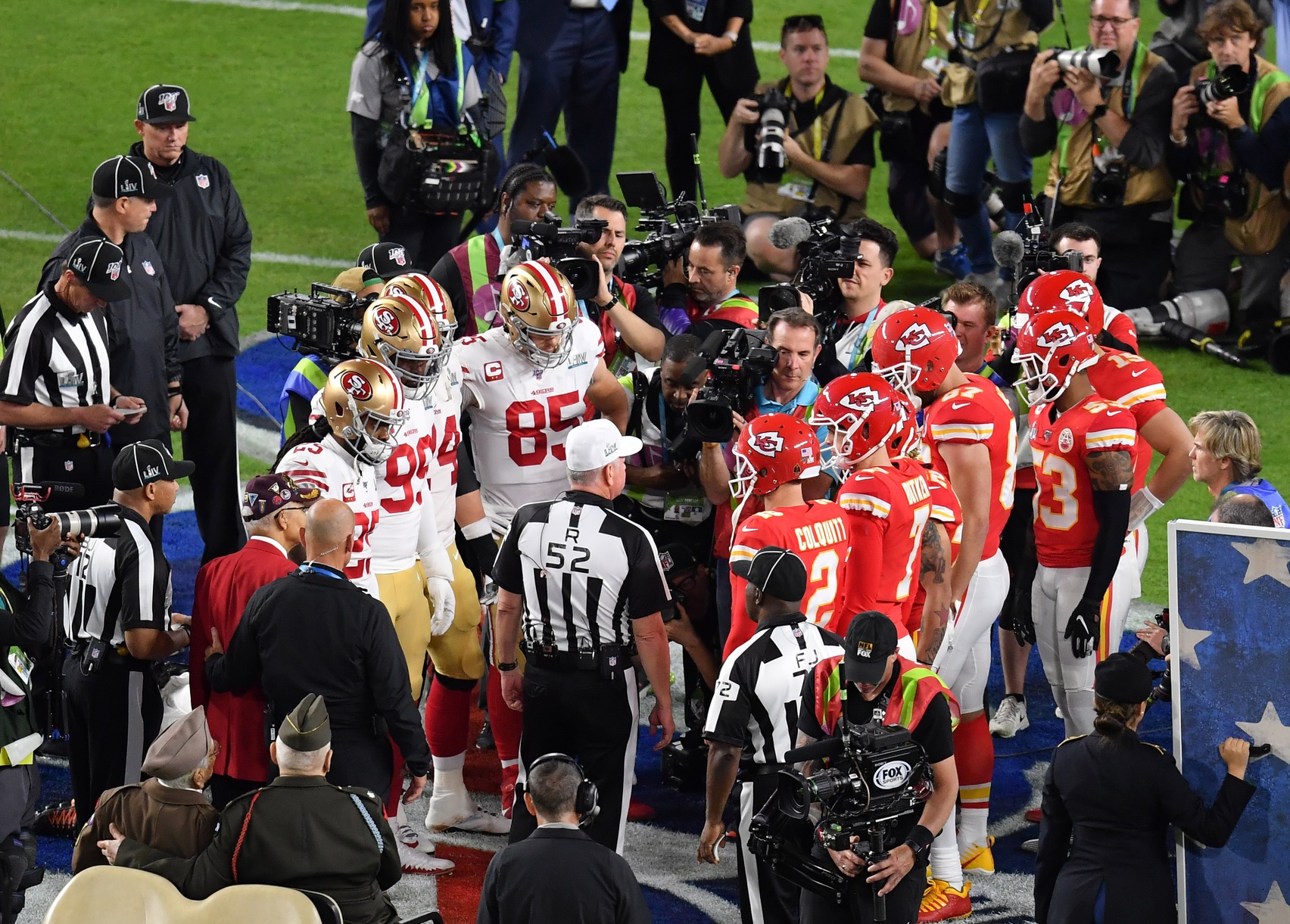
The illusion of “fair = 50:50 for both teams”
Say the match between the Kansas City Chiefs and New York Jets in Week 8 of the 2020 season — a blowout win for the Chiefs — goes a whole different route.
Let's say that the Jets return a kickoff for a touchdown and the Chiefs fumble away a fair catch that gets picked up by the Jets for a touchdown shortly after. Sam Darnold then tosses an 80-yard touchdown on a screen pass because the defender slipped, and somehow the game ends up tied after regulation.
Does the overtime proposal — which we established to be fair — mean both teams have a 50% chance to win the game in overtime? The answer is obviously no. There is a substantial difference in team strengths between those two teams, so even if both teams play the spot-and-choose game perfectly, the Chiefs will enter the overtime period as the favorite.
To illustrate why the Jets couldn’t reach a 50% win probability through spotting or choosing, let’s say the Jets need to start at the 35-yard line to have a 50% win probability. If they spot the ball there, what would the Chiefs do? Well, there isn’t a single doubt they would choose offense, and when you give Patrick Mahomes the ball at the 35-yard line in a tied game against the Jets, you better believe he has a greater than 50% chance of winning. So, if the Jets strive for 50% through an aggressive spot, the Chiefs would just take advantage of a spot that gives them a higher win probability.
And while this might be an extreme example, there is still one team among the two that can be considered as the better team in most overtime games, based on pre-game priors or how lucky the other team was to even reach overtime.
Consequently, the term “fair” doesn’t necessarily mean that both teams have a 50% chance of winning. Rather, it means that if both teams play the spot-and-choose game perfectly, the win probability at the start of overtime is precisely reflecting the teams' relative strengths, as it should.
The perfect spot is “easy” to be found
To be prepared for how overtime would work, teams need a team-specific win probability model that tells them how likely they are to win the game if they start overtime on offense at a given yard line. This is easier said than done, but for the moment, let’s assume that this exists.
Your opponent has spotted the ball at a fixed yard line. The model tells you your win probability if you choose offense is P. The opponent’s win probability if they start on offense is Q.
How do you decide? Well, your win probability when you choose defense is 1-Q. Thus, the decision is as follows:
- Is P > 1-Q? Then choosing offense yields an edge for your team
- Is P < 1-Q? Then choosing defense yields an edge for your team
As a corollary, the optimal spot for your opponent — the spot at which you can’t gain an edge via your choice — is the yard line such that P = 1-Q — or P+Q = 1 (note that whenever the teams aren’t of equal strength, this doesn’t mean P = Q = 0.5; it might mean P = 0.47 and Q = 0.53, for example).
So there it is, the theory behind the concept. And while the model significantly alters based on which of the two proposals (sudden death or 7:30) is implemented, the decision-making is not complicated once such a model is established.
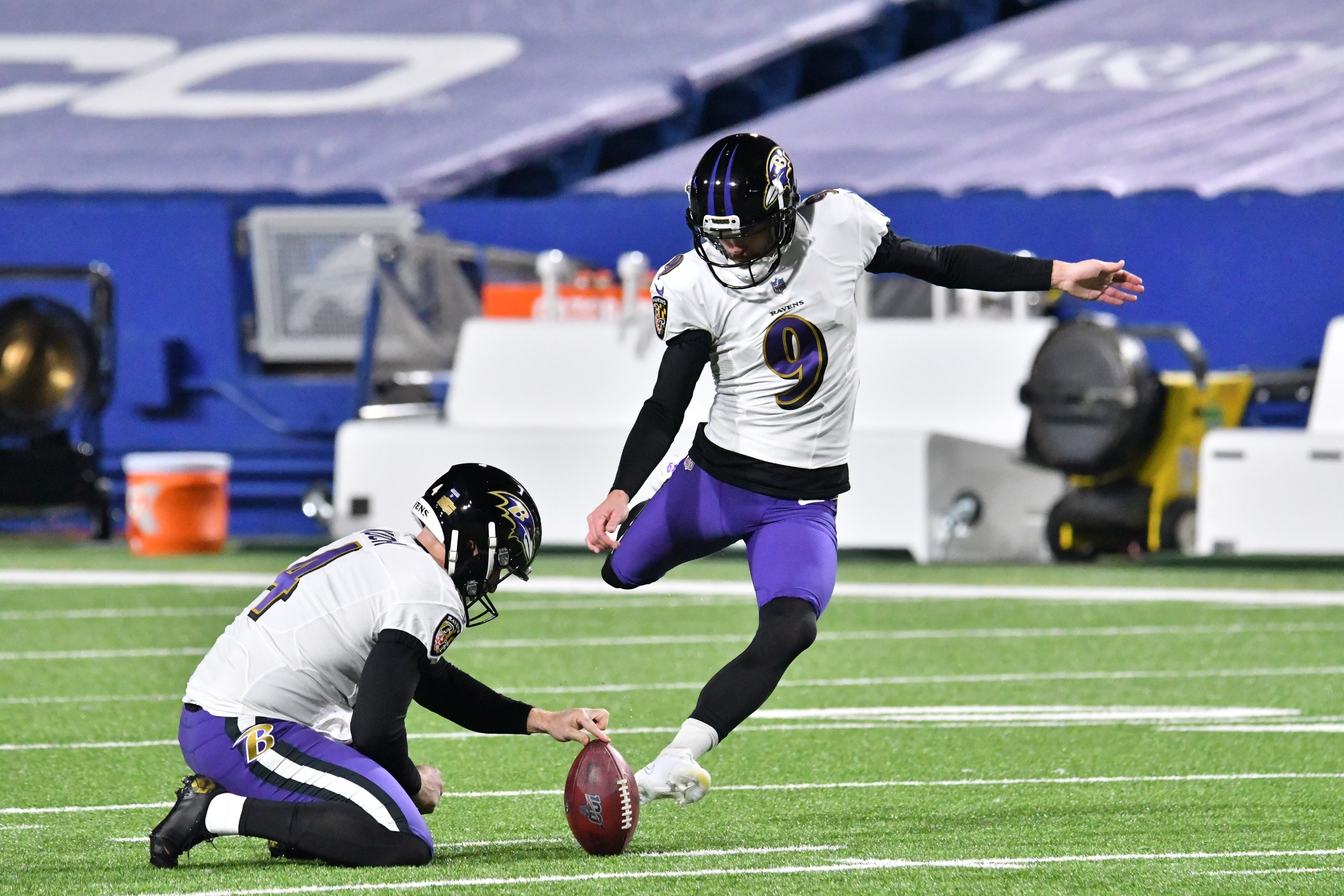
The Ravens wouldn’t mind sudden death
Creating a good model that computes team-specific win probabilities for the sudden-death variant isn’t a trivial task because the recent sample of true sudden-death drives is very small. After all, it consists of the small percentage of overtime games that have ended with a first-drive score.
Of course, we have charted thousands of drives that have started at various field positions, and we could compute the likelihood of reaching a certain field position or a score. Still, the behavior of a team in a sudden-death mode is different from the behavior of a team during a regular game. This is why our sample isn’t entirely representative.
But while we don't yet have a perfect model, it’s already clear that sudden death through any score would mean a field goal is worth the same as a touchdown. Therefore, the kicker's importance would be just a bit higher than it would be for most other situations during a game.
The Ravens very likely know this. They also know that they have the most reliable kicker in the NFL, as the following chart illustrates.
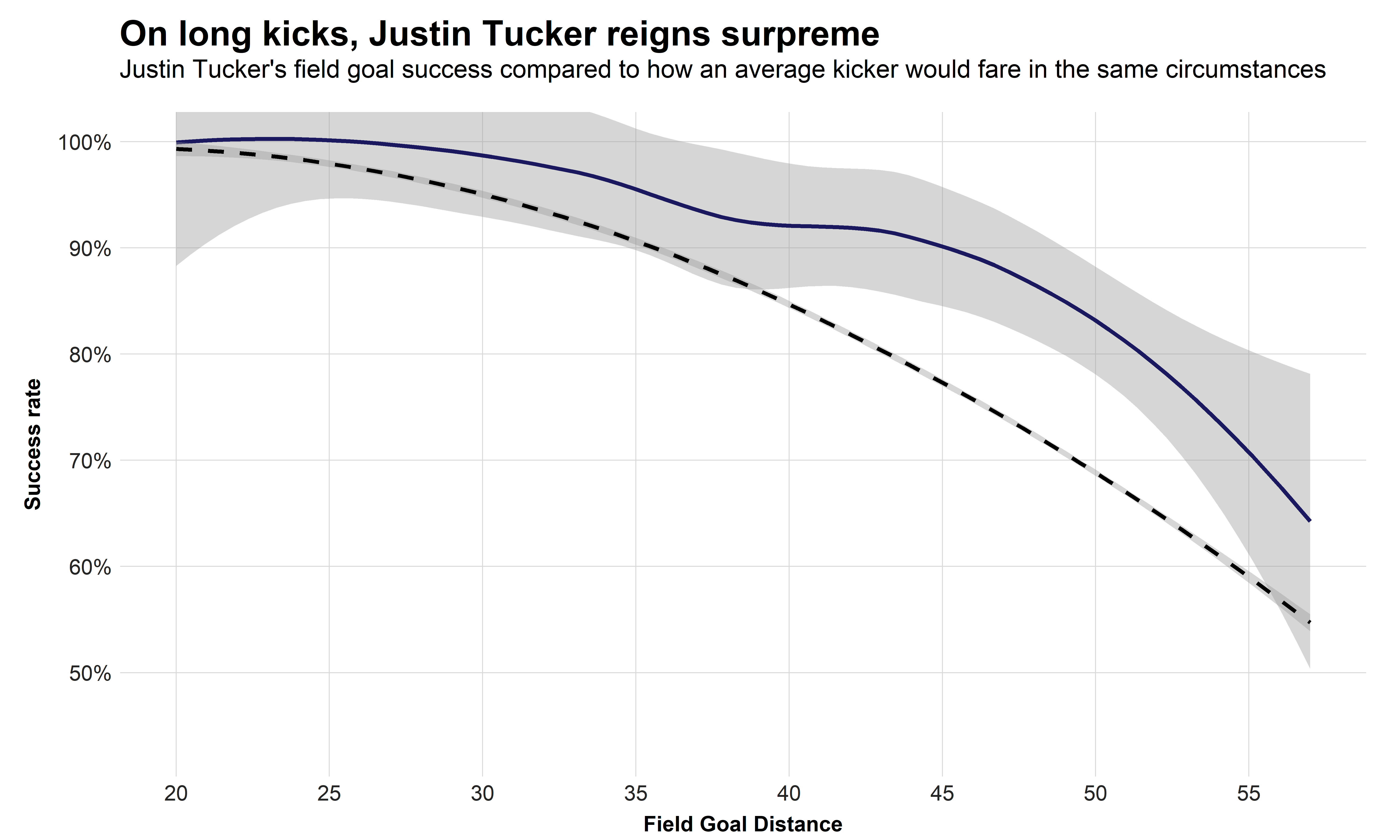
Justin Tucker has a much better successful field goal percentage than an average kicker would have when kicking in his average weather circumstances. This is especially true for long kicks, where his success rate is more than 10% higher than the league average.
A very good kicker barely shifts the odds before the start of the game, but he does shift them in a sudden-death scenario. Consequently, the prospect of facing Justin Tucker makes it harder for opponents to choose the spot against the Ravens. No matter which yard line they choose, the Ravens probably need to travel a shorter distance to get in reasonable field-goal range.
The 7:30 proposal comes with a counter-intuitive trap
From the modeling point of view, the proposal with overtime lasting seven minutes and 30 seconds after the spot-and-choose takes place is much easier to handle.
Once the ball is spotted, things aren't all that different than they would be in the fourth quarter of any other game: a team possesses the ball in a tied game with 7:30 left to play.
With the scenario so common, what would you do if your opponent spots the ball at the 5-yard line? Would you take the ball and try to drive 95 yards, or choose to play defense and try to force a three-and-out, potentially getting the ball near midfield?
Given that the expected points are negative for a team pinned down inside its own 10 — i.e., your opponent is more likely to score next than you are — one might think that it’s favorable to choose defense. However, the time left plays a crucial role here, and the behavior of expected points and win probability diverge: When you have the ball with 7:30 minutes to play in a tied game, it’s obvious that the worst that can happen is that both teams get the same number of possessions, but it’s also likely that one will actually end up with two possessions while the other gets only one.
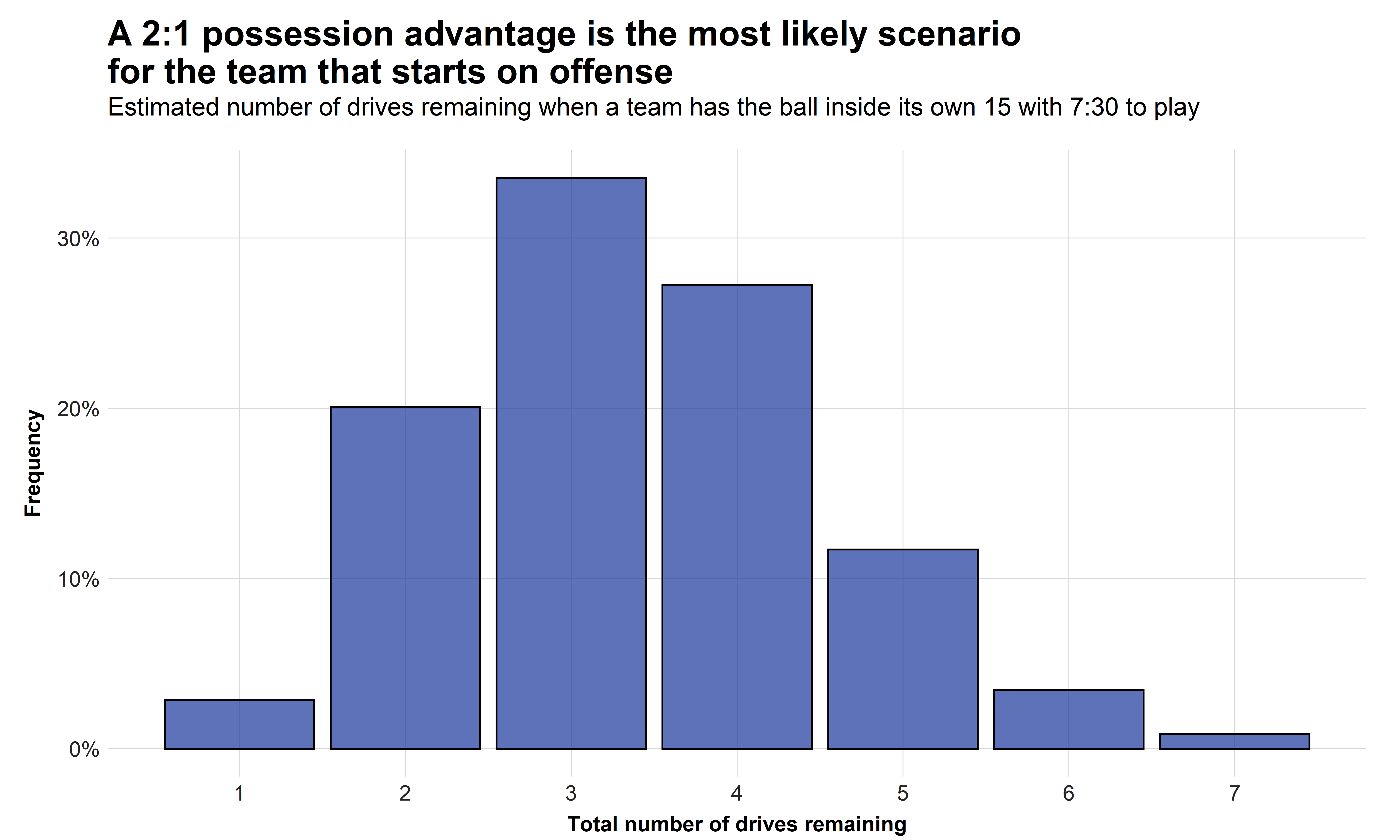
Note that the average length of possession in the NFL in 2020 was two minutes and 45 seconds, putting the expected number of possessions left at roughly three in this scenario. The potential of ending up with twice as many chances to score as your opponent outweighs the negative that your first possession starts in an unfavorable spot.
Our win probability model confirms this. When the ball is spotted at the 5-yard line with 7:30 to play in a tied game between teams of equal strength, the home team has an estimated 51.5% chance of winning when it chooses to play offense and an estimated 49.7% chance of winning when it chooses to play defense. So, teams should choose to play offense despite intuition telling us that it wouldn't be good for the offense to get the ball that deep in its own territory.
Given how slowly the NFL generally reacts to the discovery and implementation of analytical edges, I would assume that many coaches fail to realize the large value of possession over field position in the 7:30 scenario. They won't want to have the ball on their own 10-yard line in overtime and would consequently leave favorable spots for teams that forgo their intuition and conventional wisdom and trust the numbers.
Because Bill Belichick has long been searching for small edges, it’s not surprising that he would favor such a rule change that might lead some teams on the wrong track.
I don’t think either of the two proposals has a good chance to pass this year, but one version of this spot-and-choose concept might pass at some point in the future. And whenever the NFL is ready for it, we will be presented with some interesting decisions on Sunday.
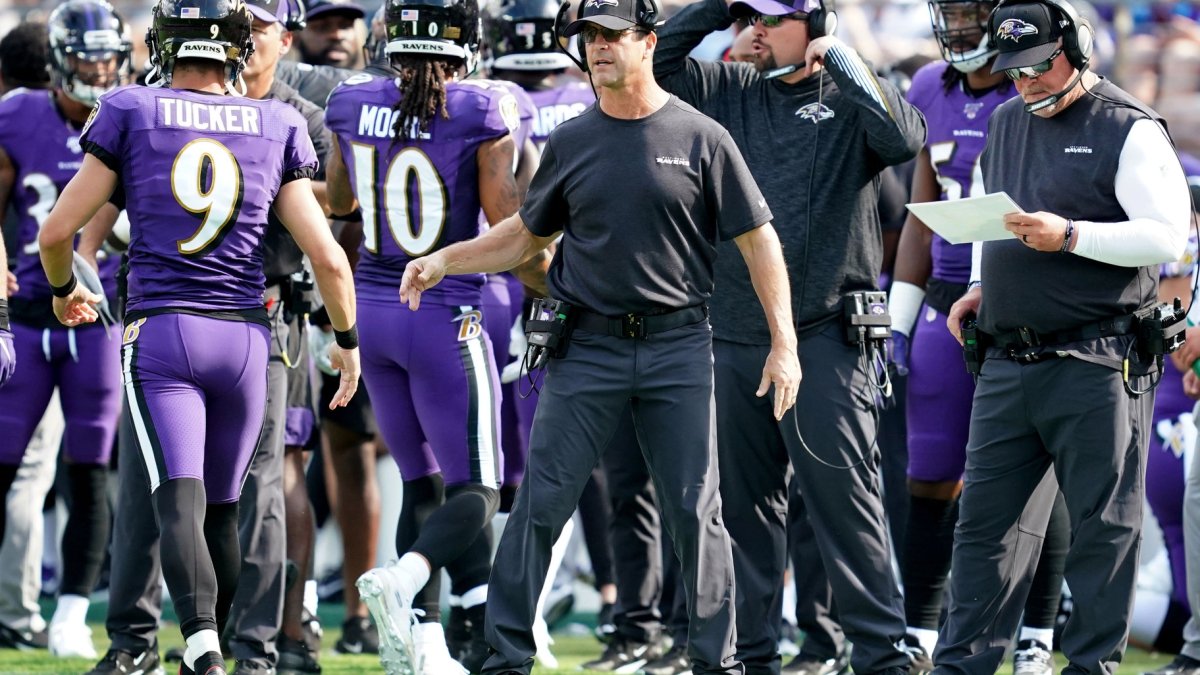



 © 2025 PFF - all rights reserved.
© 2025 PFF - all rights reserved.